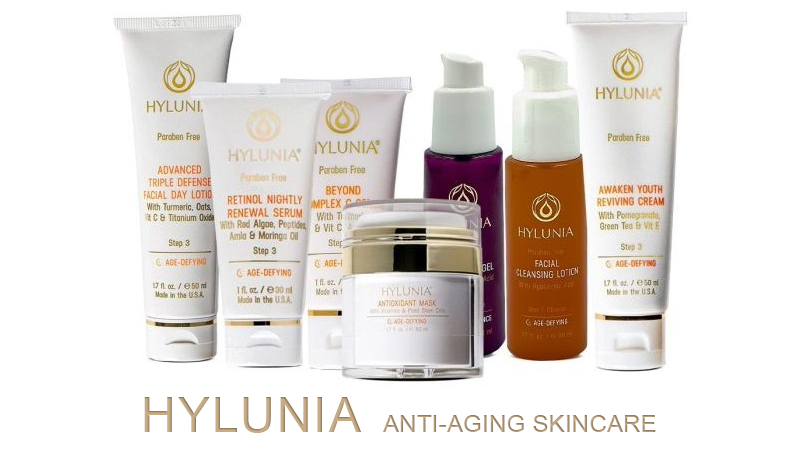
As we age, free radicals—a fancy term for unstable molecules—take a toll on our skin, causing wrinkles, sagging, and dullness. Antioxidant masks can be your skin’s secret weapon against these little troublemakers. By neutralizing free radicals, antioxidants keep skin looking youthful and vibrant. If you’re looking to give your skin a boost, here’s how to make antioxidant masks part of your anti-aging routine.
Contents
- Understanding Free Radicals and How They Age Your Skin
- Key Antioxidants to Look For in Masks
- How to Choose the Right Antioxidant Mask for Your Skin Type
- How to Use Antioxidant Masks for Maximum Benefit
- DIY Antioxidant Mask Recipes for a Natural Boost
- Extra Tips for Protecting Your Skin from Free Radicals
Understanding Free Radicals and How They Age Your Skin
Free radicals are molecules that form as a result of pollution, sun exposure, and even stress. These molecules are unstable and tend to latch onto healthy cells, breaking them down in the process. This breakdown leads to signs of aging like wrinkles, sagging, and a loss of skin elasticity.
The Role of Antioxidants
Antioxidants work like little bodyguards, stepping in to neutralize free radicals before they can harm your skin. Think of them as shields for your skin, blocking the damage that leads to premature aging. By using antioxidant-rich products, especially masks that deliver a concentrated dose, you can help your skin stay firm, smooth, and resilient.
Why Masks Are Effective for Antioxidant Delivery
Masks allow ingredients to sit on your skin for an extended period, giving antioxidants time to penetrate and work their magic. They’re like a power-packed treatment that your skin can soak up, providing immediate hydration and lasting protection. Using an antioxidant mask once or twice a week can make a noticeable difference in how your skin handles environmental stressors.
Key Antioxidants to Look For in Masks
Not all antioxidants are created equal. Here are a few that have proven benefits for aging skin and can be found in many antioxidant masks.
Vitamin C: The Brightening Powerhouse
Vitamin C is a well-known antioxidant that protects against UV damage and boosts collagen production. It also helps brighten skin, making it ideal for dull or uneven complexions. Masks with vitamin C can brighten, firm, and reduce the appearance of fine lines, giving your skin a youthful glow.
Vitamin E: The Skin Barrier Protector
Vitamin E is a fat-soluble antioxidant, meaning it’s great for strengthening the skin barrier. It not only protects against free radicals but also helps retain moisture, keeping your skin hydrated and plump. When combined with vitamin C, the two antioxidants enhance each other’s effectiveness, creating a powerful duo for anti-aging.
Green Tea Extract: The Calming Antioxidant
Green tea extract contains polyphenols, which have anti-inflammatory and antioxidant properties. This makes it perfect for sensitive or inflamed skin that needs extra care. Green tea masks can help calm irritation, reduce redness, and shield skin from daily oxidative stress.
Resveratrol: The Anti-Aging Superhero
Found in the skin of grapes and berries, resveratrol is a potent antioxidant known for its anti-aging benefits. It helps reduce the appearance of fine lines and can improve overall skin texture. Look for masks with resveratrol if you want a natural way to fight wrinkles and keep skin firm.
How to Choose the Right Antioxidant Mask for Your Skin Type
Different skin types benefit from different kinds of masks. Choosing one that fits your needs will make sure you’re getting the most out of the antioxidants.
For Oily or Acne-Prone Skin
Clay-based antioxidant masks with ingredients like green tea or vitamin C are ideal for oily skin. Clay helps absorb excess oil and purify pores, while the antioxidants fight free radicals. A mask like this can help balance your skin without clogging pores.
For Dry or Mature Skin
Look for cream or gel masks with hydrating ingredients like hyaluronic acid alongside antioxidants like vitamin E or resveratrol. These masks hydrate as they fight free radicals, keeping your skin soft, plump, and smooth.
For Sensitive Skin
If you have sensitive skin, consider masks with soothing antioxidants like green tea extract or chamomile. Avoid masks with strong exfoliating agents, as these can irritate your skin. Gel-based masks are generally gentler and can be a good choice for reducing redness and inflammation.
How to Use Antioxidant Masks for Maximum Benefit
To get the best results, there’s a bit of technique involved in applying and using antioxidant masks. Here’s how to make the most of this treatment.
Start with Clean Skin
Always begin with a freshly cleansed face. Dirt, oil, and makeup can block your pores, preventing the antioxidants from penetrating effectively. A gentle cleanser will ensure that your skin is ready to absorb the ingredients in your mask.
Apply a Generous Layer
Unlike some other skincare products, masks need a thick, even layer to work properly. Apply enough product to cover your face without overdoing it. Follow the instructions on the mask packaging to get the best results.
Let the Mask Sit for the Recommended Time
Most antioxidant masks require around 10-20 minutes to work their magic. This gives the ingredients time to penetrate and neutralize free radicals. Avoid leaving the mask on for too long, as some active ingredients can cause irritation if left on the skin too long.
Rinse with Lukewarm Water
Use lukewarm water to gently rinse off the mask, and pat your skin dry with a soft towel. Hot water can strip your skin of moisture, so keep it comfortable and lukewarm to protect your skin’s natural oils.
Follow Up with Your Usual Routine
After using a mask, your skin is primed to absorb other skincare products. Apply a hydrating serum and moisturizer to lock in moisture and enhance the antioxidant benefits. Adding sunscreen in the morning is essential, as it provides further protection against UV-induced free radicals.
DIY Antioxidant Mask Recipes for a Natural Boost
If you’re feeling creative, you can make your own antioxidant masks using simple ingredients found at home. Here are two recipes that pack a punch.
Green Tea and Honey Mask
- Ingredients: 1 green tea bag, 1 tablespoon honey
- Instructions: Brew the green tea and let it cool. Mix the tea with honey to form a paste, and apply to your face. Leave on for 10-15 minutes, then rinse.
This mask combines the calming and antioxidant effects of green tea with the hydrating properties of honey, making it ideal for dry or sensitive skin.
Vitamin C Yogurt Mask
- Ingredients: 1 tablespoon plain yogurt, 1 teaspoon lemon juice (for vitamin C)
- Instructions: Mix the yogurt and lemon juice together, then apply a thin layer to your skin. Leave on for about 10 minutes before rinsing thoroughly.
This mask offers a boost of vitamin C, which can help brighten the skin and reduce free radical damage. Use only once a week, as lemon juice can be a bit strong for sensitive skin.
Extra Tips for Protecting Your Skin from Free Radicals
While antioxidant masks are a great way to combat free radicals, a holistic approach is even more effective. Here are some additional tips to protect your skin from oxidative stress.
- Wear Sunscreen Daily: UV rays are a major source of free radicals. Sunscreen protects your skin from sun damage, which helps antioxidants work more effectively.
- Eat an Antioxidant-Rich Diet: Foods like berries, nuts, and dark leafy greens are full of antioxidants. A healthy diet can boost your skin’s resilience from the inside out.
- Avoid Smoking and Excessive Alcohol: Both of these habits introduce free radicals into the body, accelerating aging. Limiting or avoiding them can help keep your skin looking youthful.
By incorporating antioxidant masks into your skincare routine and making a few lifestyle adjustments, you can help your skin stay firm, smooth, and vibrant. Free radicals may be tough, but with the right ingredients and care, you can give your skin the protection it needs to stay healthy and youthful.

